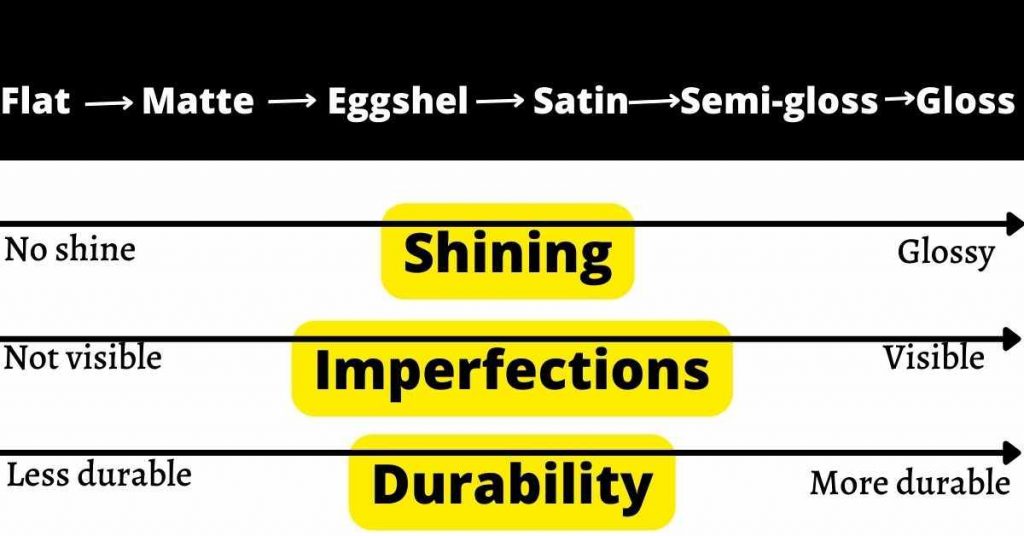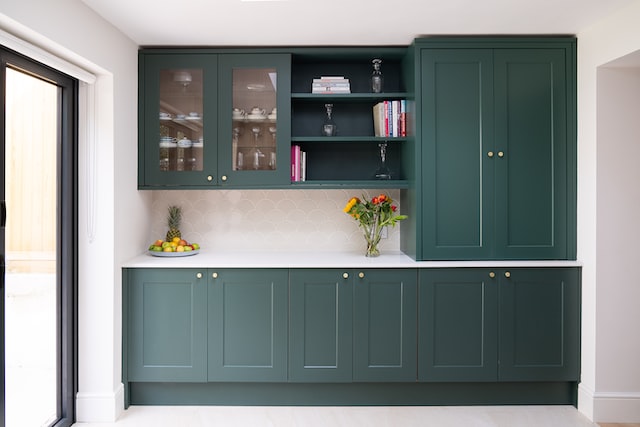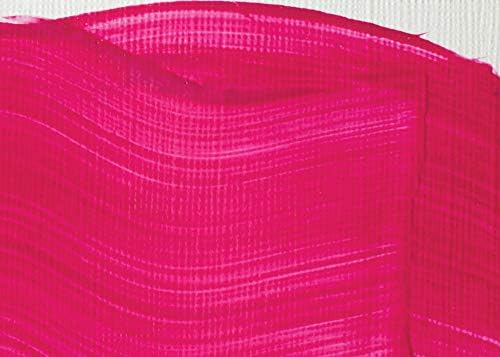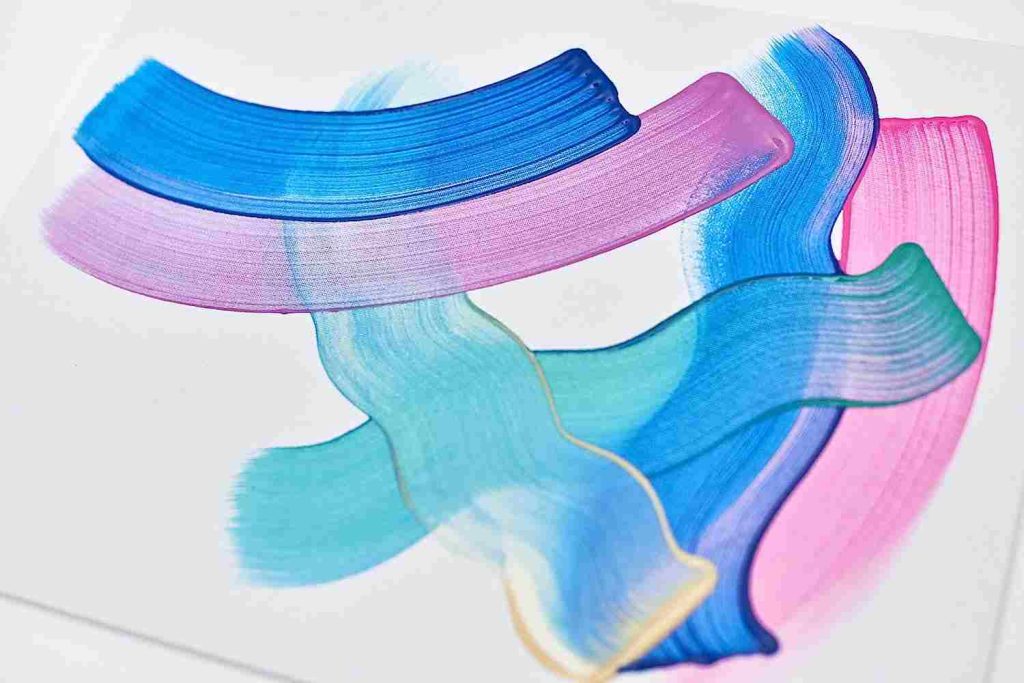Last Updated on November 19, 2023 by Masha Eretnova
Whether you are redecorating or starting from scratch, deciding a paint color is as important as deciding on a good finishing material. And among the many finishing materials in the market today, you are most likely to be deciding between Satin vs Matte. As it differs in durability, sheen and ultimately price.
Satin has a glossier finish while matte gives you a flat minimalistic finish with a low sheen. Matte is more suitable for bedrooms and furniture while satin is often used for kitchens and living rooms. Price-wise, satin paints tend to be more expensive than matte. Both satin and matte finish are popular for varnishing art.

Table of Contents
Read also:
- Satin vs Flat: Where is it Ideal to Use?
- Satin vs Gloss: Which is Ideal for your Home Decor and Painting?
- Satin vs Semi-Gloss Paint: Everything You Need to Know
Satin vs Matte: How Do They Differ?
The deal breaker lies in the sheen in satin and matte paint finishings. Some people prefer satin, as satin paint reflects more light, hence making the colors pop; while others simply prefer matte for its low sheen.
Another difference between satin and matte coat finishing is satin finishing is perfect for outdoor wall painting while matte is more suitable for indoor wall painting. This is because satin is more durable in different weather conditions while matte is less receptive.
At this point, you might simply choose satin over matte considering the durability aspect. However, there is more to it than just withstanding the test of time and which one lasts longer.
| SATIN | MATTE |
| PROS – Less maintenance needed, easy to clean – Resists scratches or damages – Reflects more light – Perfect for house with pets and kids – Resists moisture better than matte CONS – Costs $10 more on average – Can highlight surface imperfections | PROS – Cost-effective – Smooth finishing and better coverage – Can hide imperfections as matte finishes absorb light CONS – Susceptible to scratch damages – Harder to clean (not for houses with pets or kids) |
General rule – gloss finishes prove durable (satin, semi-gloss and gloss) while flat finishes cover imperfections better (eggshell, matte and flat).
A. Appearance
Satin paint, in many respects, remains to be the top choice for finishings. This is mainly attributed to how it gives depth and puts more color into a space, depending on the lighting conditions. Satin paint has an opaque look with 25-30% shine.
All glossy finishes reflect light, like gloss, semi-gloss, and satin – just at a different percentage.
On the other hand, matte paints are becoming as popular a choice as satin. Not only does it give modernized look, but it also adds sophistication and volume to a space. Matte paint is very close to flat paint (and often synonymous) and has only 5 to 10% sheen, matte reflects almost no light.
Sometimes you will see people saying “flat paint matte” because the two are very close, but flat paint finish has less sheen than matte.
Whether you choose satin to reflect more light inside your living room or bedroom is as personal a choice as choosing matte to give a cleaner and minimalistic look.
B. Finish and Coverage
A matte finish gives a dull and flat color finish on the surface of a material. Imagine a piece of colored paper that does not have a wax finish to it and you’ll get a rough idea of what matte finishing looks like. This is usually preferred by those who wish to keep a low profile and keep everything simple without sacrificing aesthetics.
Additionally, matte paints maintain a good finish on the surface of their house, car, or even personal belongings because it is pigment-rich. They offer better coverage which means you need less paint to cover the same area as if you would use satin or gloss paint.
Satin, on the other hand, reflects more light than matte. Many decorators like satin paints because they don’t take long to dry and the finish is beautiful to the eye and the touch. The coverage is not the best, but the silky finish makes satin paint one of the favorite choices of interior designers.
C. Durability and Maintenance
Satin paint is more durable and resistant than matte paint.
Ask any paint expert and he/she will tell you the amount of resin in a paint formula is important in terms of durability:
- Satin paint, in general, has more resin/binders making it more resistant to scratches and other surface damages. Resin is also responsible for satin finishing’s luster giving it its velvety appearance. Moreover, it won’t easily wear off when rubbed or scrubbed for cleaning. Satin paint works better for houses with kids and pets.
In addition, satin paint resists mold better and is easier to clean than matte or even eggshell surface finishing.
- On the other hand, matte finishing has a low resin component in its formula. And with this, it is easy to deduce matte finishings constantly face the risk of scratches and wear-offs when scrubbed for cleaning. Another problem with matte is how it is moisture resistant making it less durable. Furthermore, the low resin in the formula of matte finishing means it will easily lose its smooth surface finish in comparison to satin.
D. Cost
On average, satin paint is around $10 more expensive than matte paint. Below is a price comparison between satin vs matte paints from these two top paint brands in the USA.
| SATIN PAINT | |
| Krylon Colormaxx Satin black, spray | $16 |
| Rust-Oleum Satin Paint | $38-$48 per quart |
| MATTE PAINT | |
| Krylon Colormaxx Matte black, spray | $6 |
| Rust-Oleum Interior Matte Paint | from $20-30 per quart |
And taking the win for the cost category is matte. Another reason why matte is cheaper than satin is the coverage of satin. On top of the average price difference, satin paint has issues when it comes to coverage. Meaning, that you may spend more on satin to ensure you have enough finishing material.
Satin vs Matte: Which is Better for Where?
Paint finishing is very important in any decorating project. However, if you do not have plans to regularly change your paint coating on the surface of your interior walls or fences, we have compiled a short list of areas where satin and matter are best suited for. This list includes, but is not limited to, the following:
- Kitchen Area – satin paint
- Living Room Area and Dining rooms – satin paint
- Bedroom and family rooms – matte paint
- Kids rooms – satin paint
- Bathroom – satin is better
- House Office Area – matte paint
- Ceilings – matte paint
- Bumpy walls and floors – matte finish

A. House Interior and Cabinets
A kitchen is a place where we spend a lot of time experimenting with food because we all know that food is the way to everyone’s heart. Hence, we kind of expect this area to be getting a lot of action—from opening and closing cabinets to shuffling kitchen wears on the countertops, to shutting cupboards and fridge doors.
The same is true for the living room where frustrated karaoke singers tend to belt it all out, children run amock, or your teens playing the latest PS4 games. Such areas are called “high-traffic” areas.
These are places in the house where people frequent making them prone to bumps, scratches, fingerprint stains, food stains, and scrubs. Given our breakdown earlier for durability, kitchen and living room walls, cabinets, countertops, and cupboards are good with satin paint finishing.
Satin paint finishing is also preferred by interior designers and experts on areas you typically wipe something with such as counters, wooden coffee tables, window frames, hardwood floors, tables, chairs, and moldings to name some.
B. Bedroom and Office Rooms
In contrast to the living room and kitchen, bedrooms, and house offices are generally considered low-traffic areas. These are areas where actions are at a minimal degree. As a result, we typically have to scrub them clean or bump and scratch the walls less. In these areas, matte paint finishing is usually preferred because there is no need for regular maintenance and the coverage is typically efficient.
In addition, a ceiling area is also a perfect place where matte paint can be used as ceilings, while they require cleaning every once in a while, and don’t require rigorous scrubbing.
C. Bathroom Walls
Bathrooms are high-traffic areas and, thus, require a paint finish that could resist all the comings and goings. With this, it’s best to settle with satin finishing as this is waterproof and won’t easily peel from your walls due to the changes in temperature inside.
If you can recall, we mentioned earlier how satin paint resists molds and can withstand moisture better than matte paint. Since the bathroom walls are constantly drenched in water and experience changes in room temperature (wink to cold and hot showers), they are very prone to molds, and removing molds require scrubbing which, by extension, can damage the paint coating. Hence, satin paint is very much preferred in this scenario.
However, if you wish to settle with a matte instead, it could work as well. Modern paint technology now makes matte finishing resistant to the harsh results of the changes in temperature inside a bathroom.
Satin vs Matte Acrylic Paint: What’s the Difference?


Regular acrylic paint can be semi-glossy or matte, rarely we will find craft acrylics with satin finish. Satin acrylic paint is shinier than matte and more durable, but also dries faster (10-20 min), however matte acrylic paint can be easier to apply. To adjust the finish and shining, we can use matte varnish or glossy varnish, and even epoxy, to make all colors really pop.
Acrylics tend to dry darker and they are opaque, so a nice gloss finish works magically, while, for me, matte makes it even darker. Satin dries to light gloss, while matte will dry exactly like you see it – quite flat.
For satin acrylic paint, we recommend getting Folk Art Satin Paint – it is great for a variety of crafts from paper to glass. Another popular and cheap brand Craft Smart also has satin paint for kids and students.
On the other hand, matte acrylic paint, like Apple Barrel Matte paint, is preferred by some crafters because it has less sheen making the finished product look softer, less bright.
Whether you are painting on a canvas or on your house walls, you might want to consider how you wish the finished product would look. Do you prefer a flashy and flaunty finish or a more subdued but sophisticated, nonetheless, look?
Related:
- How to Paint with Acrylics on Canvas: 3 Essential Steps [Supplies included]
- Best Acrylic Paint: 21 Brands Reviewed for Beginners [From Cheap to Pro]
Satin vs Matte Spray Paint: Which Is Better?
Essentially, satin and matte spray paint possess the same elements as acrylic. Moreover, satin and matte spray paint also give off more or less the same result as the acrylic ones. Which one is better depends on the surface where you wish to use it and how exposed that surface is.
To review, satin spray is best used in high-traffic areas (kitchen, floors) while matte is better off used in areas with fewer actions so as not to damage the finish. Matte spray paint will be a more cost-efficient decision than satin spray paint.
However, satin spray painted surfaces make damage more visible in contrast to matter spray paint. With this, we give the upper hand to matte spray paint.
Satin vs Matte Varnish for Painting?
When finishing a painting on canvas, artists do consider using satin and matte varnishes. Satin or gloss varnishes are the most common choice as they make all color pop and make your painting really look finished and cool (trust me!). Oil paints look better with gloss varnish.
Using matte varnish is possible and results in softening of the colors. Some paints like gouache or matte acrylics dry to a matte finish already. Some traditional varnishes tend to get cloudy and mess up the painting, so be careful and test it on a small piece of paper!
Fortunately, you can mix one with another to achieve your desired outcome and make the perfect shine for your painting.
Consider where would you hang it as well, if the area gets too much direct sunlight, the gloss finish will constantly reflect the light and you won’t be able to enjoy the beauty of the painting.
One of the best brands for all art supplies – Liquitex, has both satin and matte varnishes of high quality and protection.

Satin Black vs Matte Black: Best Choice for Cars?
Satin black and matte black will essentially work on any surface. But we can see them often in cars.
Matte black became the most popular car vinyl when it first came out. It redefined beauty for cars. This color gives off meaner, darker, and old-school black on a car. However, because it has low shine and seems to be dull, a lot of car enthusiasts have made a shift to satin black.
I find matte black on cars, metal or other surfaces that are used often to get all dirty and collect all fingetprints too fast. It’s irritating.
Because of the sheen in its formula, satin black gives off a glossier color effect in contrast to matte black. It has the ability to make a car look sexy, classy, and shine under different lighting conditions. Plus, it makes the surface of the car appear smoother in comparison to the matte black.
Satin Finish vs Matte vs Eggshell

Satin and Eggshell finishings are cousins of some sort. However, eggshell paints have lesser resin resulting in a lower sheen (10 – 25% gloss) in contrast to satin (25-35%). Additionally, eggshell paint finishing does not respond to changes in temperature and conditions as much as satin does.
In choosing between satin vs matte, we know satin is better used in areas that have a high risk of bumps, scratches, and maintenance. The same can be said for eggshell paint but, again, it has a lower sheen than satin. Of course, matte is for areas where less action happens. Plus, matte is duller in comparison to satin and eggshell.
FAQs on Satin vs Matte Paint
Which is shinier satin or matte?
Paints have resin in their formula, which is responsible for the shine effect once the paint dries. Satin has a higher concentration of resin resulting in a better sheen in comparison to matte. Hence, satin shines more than matte.
Is matte or satin easier to clean?
Surfaces coated in satin paint are easier to clean than matte. This is because the finishing is inherently resistant to dust and dirt and does not require heavy-duty scrubbing to remove them.
Can you mix matte and satin paint?
There is no rule book that says you can’t mix satin with matte so the answer is yes you can. However, we would like to point out that water-based paints aren’t the same as oil-based paints and therefore would not mix very well.
Is satin the same as matte?
In terms of durability, sheen, coverage, and ease of application, satin and matte are not the same painting materials. Satin gives a shinier finish, is durable despite the changes in room temperature, and resists molds. On the other hand, matte finishing gives a less shiny finish, requires less maintenance, and is easy to apply over satin paint.
Where to use a matte paint finish?
Matte finishings are good in areas that require fewer actions like bedrooms, home offices, and ceilings. These areas receive less surface damage, hence, fewer maintenance requirements.
Final Thoughts
Moving from one season to another might warrant redecorating to match the atmosphere. We hope we have been clear in differentiating satin vs matte vs eggshell and helped you choose the right finish for your house.
Remember, the satin paint finish has a higher sheen and more resistant to wear and tear, while matte finish is non-reflective and has lower sheen level, hiding all imperfections.
Happy painting, everyone!

Masha Eretnova, born in 1991, is a Buenos Aires-based certified teacher, artist, and member of the Professional Artist Association with 20+ years of personal painting journey.
She started painting and drawing very early and is now an international abstract artist and educator passionate about acrylic painting, gouache, and crafts.
Her works are part of international exhibitions and contests, including ArtlyMix (Brazil), Al-Tiba 9 (Spain), Exhibizone (Canada), Italy, and many more.
Besides her artistic pursuits, Masha holds a post-grad diploma in Teaching Film Photography and 2 music school diplomas: piano and opera singing.

